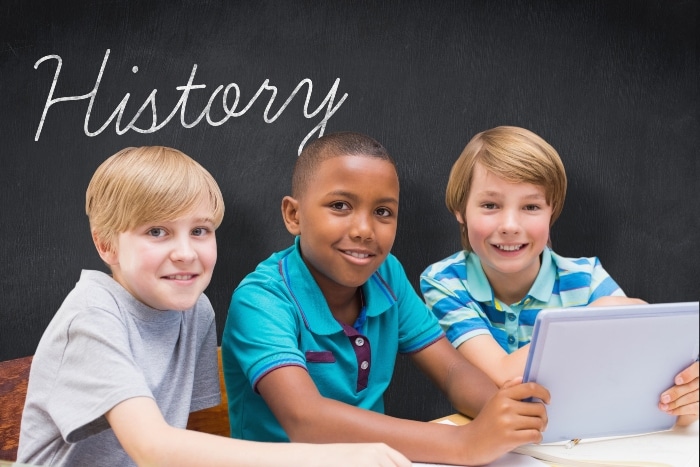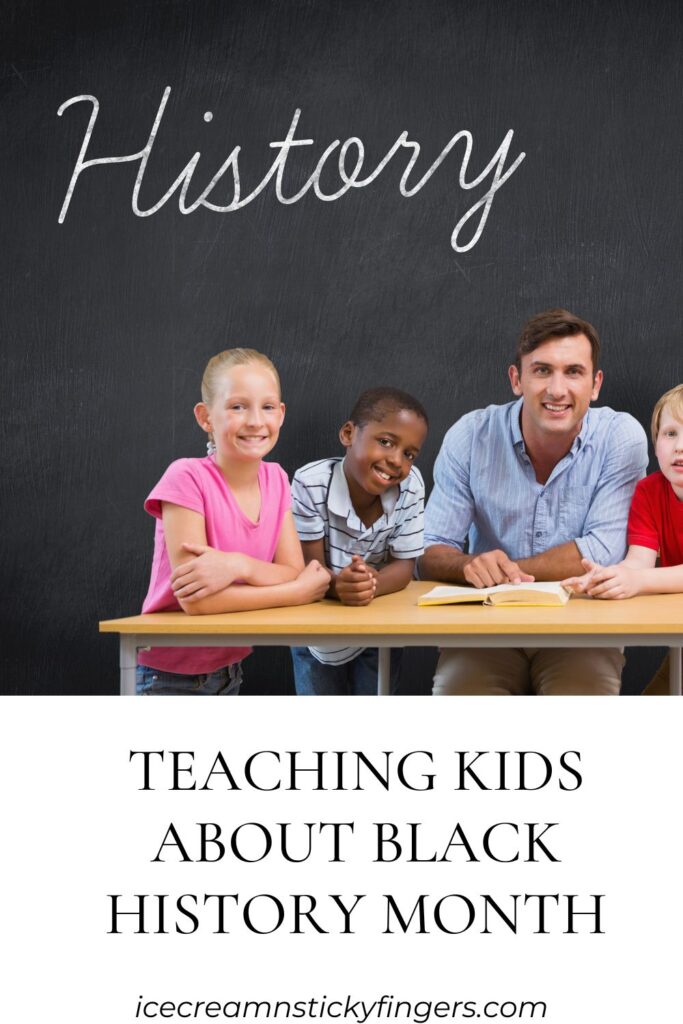Teaching kids about Black History Month is a valuable opportunity to educate them about the contributions, struggles, and achievements of Black individuals throughout history. Here are some tips for effectively teaching kids about Black History Month:

Start with the Basics
Begin by explaining the purpose and significance of Black History Month. Help children understand why it’s important to learn about the experiences and achievements of Black people.
Highlight Key Figures and Events
Introduce children to important figures and events in Black history, such as Martin Luther King Jr., Rosa Parks, Harriet Tubman, Malcolm X, the Civil Rights Movement, the Underground Railroad, and the Harlem Renaissance.
Explore Local History
While learning about national and international figures and events is important, don’t overlook the significance of local Black history. Research and explore the contributions of Black individuals and communities in your own area. This can include historical landmarks, local heroes, and community organizations that have made a positive impact.
Use Age-Appropriate Resources
Choose books (aff link), videos, and other resources that are age-appropriate and engaging for kids. Look for materials that feature colorful illustrations, simple language, and relatable stories.
Encourage Critical Media Literacy
Teach children to critically analyze media representations of Black history and culture, challenging stereotypes and misinformation. Provide tools and strategies for evaluating sources, identifying bias, and interpreting historical narratives in a nuanced and informed way.
Create Hands-On Learning Experiences
Provide hands-on learning experiences that allow children to actively engage with Black history and culture. This can include interactive projects, role-playing activities, museum visits, virtual tours, and community service projects that bring history to life and foster a deeper understanding of the subject matter.

Encourage Critical Thinking
Encourage children to think critically about historical events and figures. Help them understand the context in which these events occurred and the impact they had on society.
Promote Diversity and Inclusion
Teach children about the diversity within the Black community and the importance of inclusion and acceptance. Discuss how people of different races, ethnicities, and backgrounds have contributed to Black history and culture.
Connect History to the Present
Help children make connections between past and present issues related to race and social justice. Discuss how the legacy of slavery, segregation, and discrimination continues to impact society today.
Highlight Contributions in STEM Fields
Emphasize the significant contributions of Black scientists, engineers, mathematicians, and inventors to advancements in science, technology, engineering, and mathematics (STEM). Explore the achievements of trailblazers such as George Washington Carver, Katherine Johnson, and Mae Jemison, inspiring children to pursue their interests in STEM fields.
Celebrate Achievements
Celebrate the achievements and contributions of Black individuals in various fields, including science, technology, literature, music, sports, and politics. Highlight the accomplishments of both well-known figures and unsung heroes.
Encourage Reflection and Discussion
Create opportunities for children to reflect on what they’ve learned and discuss their thoughts and feelings about Black history and its relevance to their lives.

Explore Art and Culture
Introduce children to the rich artistic and cultural contributions of the Black community. Explore different forms of art, music, dance, literature, and cuisine that have been influenced by Black culture. Encourage children to appreciate and celebrate the diversity of expressions within the Black community.
Encourage Continued Learning
Black History Month is just the beginning of an ongoing journey of learning and exploration. Encourage children to continue exploring Black history and culture beyond the month of February. Provide them with resources and opportunities to deepen their understanding and engage with these topics throughout the year.
Celebrate Diversity
Teach children that Black history is not a monolithic narrative but a tapestry of diverse experiences, perspectives, and identities. Highlight the intersectionality of race with other aspects of identity, such as gender, sexuality, religion, and socioeconomic status.
Provide Opportunities for Creativity
Encourage children to express their understanding of Black history and culture through creative projects. Allow them to write poems, create artwork, perform skits, or engage in other forms of self-expression that reflect what they’ve learned.
Include Voices from the Black Community
Whenever possible, incorporate the voices and perspectives of Black educators, authors, activists, and community leaders into your teaching. Invite guest speakers or organize field trips to local cultural institutions or historical sites related to Black history.

Promote Empathy and Respect
Encourage children to empathize with the experiences of Black people and to show respect for their struggles and achievements. Emphasize the importance of treating everyone with kindness, fairness, and dignity.
Address Systemic Injustices and Oppressions
Help children understand the systemic injustices and oppressions that continue to impact Black communities today, including disparities in education, healthcare, criminal justice, and economic opportunity. Encourage them to critically examine systems of power and privilege, and to advocate for positive change in their communities.
Inspire Hope and Resilience
Above all, inspire hope and resilience by highlighting stories of triumph, resilience, and progress within Black history and culture. Encourage children to draw strength from the legacies of those who have overcome adversity and worked tirelessly to create a more just and equitable world for future generations.
Support Black-Owned Businesses and Organizations
Teach children about the importance of supporting Black-owned businesses and organizations in their communities. Encourage them to seek out opportunities to learn from and engage with Black entrepreneurs, artists, activists, and community leaders.
Take Action
Encourage children to take action to promote equality and justice in their own communities. Discuss ways they can support efforts to combat racism and discrimination and make a positive difference in the world.
By incorporating these strategies into your teaching practices, you can help children develop a deeper understanding of Black history and culture, foster empathy and respect for diverse perspectives, and empower them to become active agents of positive change in their communities and beyond. These ideas are just the beginning of teaching kids about Black History month. There are so many other opportunities for your child to learn about Black History month.








Thank you for this very informative subject for our children.
I love these ideas. We’ve always had books on Black History Month around the house that my kids loved to go read.
I love finding different books to help teach my kids about Black History Month. Thanks for sharing this very helpful post!
Teaching kids about Black History Month is crucial for fostering understanding and appreciation from a young age. I love the idea of starting with the basics and gradually introducing them to key figures and events.
I think it’s awesome to find ways to teach Black History Month that the kids are interested in. Seems like everyone does the same figures, which is great when they’re little but when they reach high school, which is what I’m teaching, it’s nice to see things branched out.
I appreciate the practical advice on starting with the basics, highlighting key figures and events, and exploring local history to make the learning experience more meaningful.
These are great ways to incorporate black history month into teaching. Always good for kids to learn more and to have a variety of teaching strategies.
Thanks for sharing these suggestions on how to teach kids about Black History Month. I’ve bought books for my daughter that highlight the progress within Black history and culture.
It’s important to teach kids about Black History Month. Thanks for sharing.
I like the idea of creating hands-on experience. We’re currently homeschooling and would love to explore the idea of doing some virtual tours to make it more memorable and fun. ( I think we don’t have a nearby museum.)
Thank you for sharing these tips.
love all these suggestions.. and I always have books that I share with my kids as well as have discussions with them regarding various topics including #blacklivesmatter and history
Thank you for providing such a comprehensive and thoughtful guide to educating children about Black History Month! I appreciate how actionably you’ve broken things down into age-appropriate recommendations, hands-on activity ideas, critical thinking skills development, and more.
For me, teaching our kids about Black History Month leads them to have respect for other people no matter the color of their skin and their race.